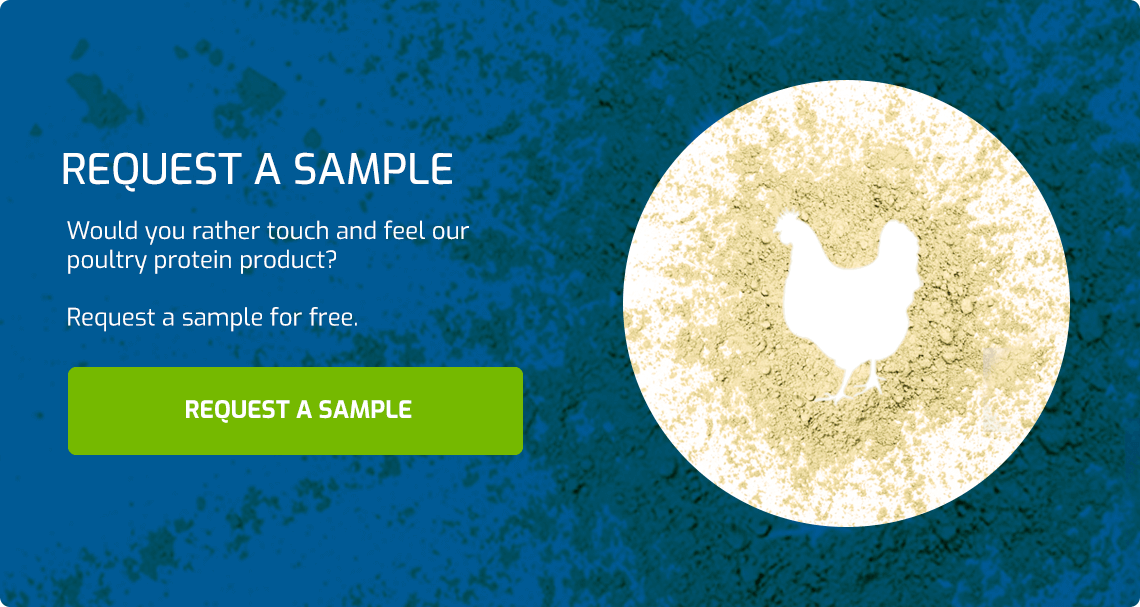- +31(0)499-364-820
- Noticias y blogs
-
EspañolES
-
Plant-based protein (also called vegetable protein) is a common additive in poultry meat. The most applied plant-based protein is soy. Here, we outline why and how functional poultry protein is a superior additive compared to plant-based proteins. Sonac’s functional poultry protein will yield a higher quality, is more cost effective and eco-friendly and is an allergen-free end product for your consumers.
The difference between plant-based protein and animal-based protein
Plant-based proteins are typically a go-to addition for producers of meat products. While soy is the most common, others like pea protein and garbanzo bean proteins are increasing in popularity in other non-meat products. The drawbacks to pea and garbanzo bean proteins are that they’re expensive, their taste is noticeable and not delicious, and both proteins are not yet produced in large volumes, which could lead to future supply issues.
The most common plant-based protein: Soy
Soy (and its derivatives soy protein, soy protein concentrate, and soy protein isolate) is the most common vegetable protein binder and emulsifier used in chicken products and turkey products. It’s widely available and is affordable, particularly because soya is a commodity crop with many suppliers across all global markets. Many food manufacturers also believe it is easy to use and incorporate into their poultry end product.

A better alternative for plant-based protein
But poultry proteins like QBind Chicken FPP C and QBind Turkey FPP T are unsung heroes. Here’s why they’re superior, and why they should be used in place of soy protein:
1. Functional poultry protein yields a higher quality product
The composition of chicken protein and turkey protein makes the final product more stable, appropriately firmer (as in a just-right meaty bite and not tough), and juicier than if soy was used. The juiciness comes from the collagen (there’s about 40% collagen in both poultry proteins), which melts when it’s heated and also helps bind and hold water in the poultry product—both of which contribute to a juicy end product. Collagen also plays a leading role in the firm structure that FPP C and FPP T provide.
2. Functional poultry protein is more cost effective
Despite what you may expect, adding chicken or turkey protein to your poultry meat product will lower your expenses. FPP C and FPP T have cost savings at various stages along the value chain. There are three main avenues: reduce cost by decreasing the quantity of an expensive ingredient. Second, when you use FPP, you need less of it compared to if you were using soy because it has a higher water binding and emulsifying capacity compared to soy. And third, increase cost savings by improving product yield. Another current concern is the unstable price of soy. As you can see in the graphic below, the price of soybean meal has increased approximately 100USD per short ton since Fall 2020 until February 2021. The expectation is that the prices might be subject to periodic fluctuations for the next few years.

Read more about how FPP C or FPP T reduces cost here.
3. Functional poultry protein is free of allergens
Unlike soy, the poultry proteins FPP C and FPP T are natural products and not common allergens. Soy is one of the top 8 allergens. When a food ingredient is an allergen, there are two main challenges for formulators. The first is labeling: the food package must include allergen labeling. Secondly, in an effort to prevent cross-contamination of allergen traces, allergenic ingredients present logistical challenges during production. Using FPP C and FPP T also help you clean up your end product ingredient label.
Why you should replace vegetable functional protein
In summary, replacing an allergenic plant-based ingredient, such as soya, with an animal protein like FPP C or FPP T will improve your end product’s quality, lower production costs, and leave you with an allergen-free food product that has a clean, GMO free label.
Request a protein sample to test yourself
Learn more about QBind Chicken FPP C here, and QBind Turkey FPP T here and download our leaflets for more information.
Are you thinking about switching from a plant-based protein such as soy to chicken protein? If so, you can always request a sample to test these proteins in your product. Fill out a request here and a product specialist from Sonac will arrange for a sample to be sent.
